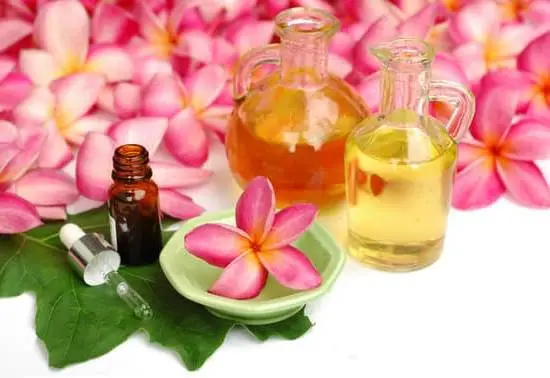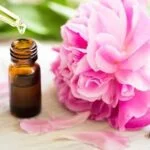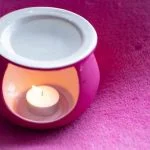Frankincense, derived from the resin of the Boswellia tree, has been valued for its aromatic and therapeutic properties for centuries. In the realm of aromatherapy, frankincense is a highly sought-after essential oil due to its rich history and numerous benefits.
Whether used for stress relief, immune support, or relaxation, frankincense plays a significant role in enhancing well-being and promoting a sense of balance. This article explores the various uses of frankincense in aromatherapy, delving into its origins, properties, extraction process, and common applications.
To fully comprehend the power of frankincense in aromatherapy, it is important to understand its roots. This precious resin has been used for thousands of years in religious ceremonies and traditional medicine throughout ancient civilizations such as Egypt and Mesopotamia. Revered for its captivating aroma and believed to possess healing properties, frankincense holds a special place in history as one of the most treasured fragrances.
Aromatherapy itself has gained widespread recognition for its ability to promote physical and emotional well-being through the use of essential oils. By harnessing the natural scents and therapeutic compounds found in plants like frankincense, aromatherapy provides a holistic approach to health and wellness. It involves inhaling or applying essential oils topically to stimulate specific responses within the body that can help alleviate ailments or improve overall mood.
Intriguingly, when frankincense is introduced into an aromatherapy routine, it brings with it a unique set of qualities that make it an indispensable ingredient. Frankincense possesses anti-inflammatory properties that may aid in reducing stress and easing muscle tension. It is also known for its calming effects on the mind – helping to relieve anxiety and uplift mood. Moreover, frankincense has been identified as having immune-boosting properties that can support overall well-being.
As we further delve into this article, we will explore the extraction process and properties of frankincense essential oil. We will also provide a comprehensive list of common uses for frankincense in aromatherapy, along with step-by-step instructions on how to incorporate it effectively.
Additionally, we will discuss important safety considerations when using frankincense, ensuring you can enjoy its benefits without any adverse effects. So, prepare to embark on a journey that uncovers the immense potential of frankincense in aromatherapy and discover how this ancient resin can enhance your well-being.
Understanding Frankincense
Origins of Frankincense
Frankincense, also known as olibanum, has a rich and ancient history that dates back centuries. It is derived from the resin of trees belonging to the Boswellia genus, which are native to regions of Africa and the Arabian Peninsula. The resin is obtained through a process known as tapping, where deep incisions are made in the tree bark to allow the sap to flow out and harden into resin droplets.
The use of frankincense can be traced back to ancient civilizations such as Egypt, where it was valued for its aromatic properties and believed to have powerful spiritual and healing qualities. It was burned as incense during religious rituals and ceremonies, and was also used in cosmetics, perfumes, and embalming practices.
Properties of Frankincense
Frankincense possesses a unique combination of properties that make it a highly sought-after ingredient in aromatherapy. Its scent is often described as warm, woody, and resinous with subtle citrus undertones. This aroma is believed to promote relaxation, calmness, and mental clarity.
In terms of its therapeutic properties, frankincense has been found to have anti-inflammatory effects on the body. This makes it beneficial for relieving pain and soothing inflamed skin conditions such as eczema or acne. It is also considered an immune system stimulant, helping to support the body’s natural defense mechanisms.
Furthermore, frankincense has been studied for its potential antidepressant effects by influencing neurotransmitter activity in the brain. Some research suggests that inhaling frankincense essential oil may help reduce symptoms of anxiety and improve mood.
Overall, the origins and properties of frankincense make it a valuable ingredient in aromatherapy due to its long-standing historical significance and therapeutic benefits.
Exploring Aromatherapy
Aromatherapy is a holistic healing practice that utilizes essential oils extracted from plants for promoting physical and emotional well-being. It has been used for thousands of years in various cultures around the world and is known for its therapeutic properties. In this section, we will provide an overview of aromatherapy and delve into the numerous benefits it offers.
The Basics of Aromatherapy
Aromatherapy involves the use of essential oils, which are highly concentrated plant extracts derived from flowers, leaves, stems, roots, or other parts of a plant. These oils capture the plant’s aromatic compounds and possess unique therapeutic qualities. When inhaled or applied topically, they interact with the body’s natural processes to promote healing and balance.
Benefits of Aromatherapy
One of the primary benefits of aromatherapy is its ability to support emotional well-being. Essential oils can influence mood, reduce stress and anxiety, uplift spirits, and promote relaxation and better sleep. For example, lavender oil has calming properties that aid in relieving stress and promoting restful sleep.
Aromatherapy is also effective in addressing physical ailments. Different essential oils have distinct properties that can help alleviate pain, reduce inflammation, boost the immune system, improve digestion, and enhance overall vitality. Some popular examples include peppermint oil for headaches or digestive discomforts and tea tree oil for its antimicrobial properties.
Furthermore, aromatherapy offers a natural alternative to conventional personal care products and cleaning agents that often contain synthetic chemicals. By using essential oils as fragrance additives or disinfectants in their homes or skincare routines, individuals can avoid potential harmful effects associated with these synthetic substances.
Overall, aromatherapy provides a holistic approach to wellness by integrating the healing power of nature into our daily lives. Whether it’s for physical health or emotional balance, incorporating aromatherapy into your routine can bring about a sense of well-being and relaxation. In the next section, we will explore how frankincense specifically plays a significant role in aromatherapy practices.
The Power of Frankincense in Aromatherapy
Frankincense has been used for centuries in various cultural and religious practices due to its unique qualities and benefits. In the context of aromatherapy, frankincense plays a vital role in promoting overall well-being and balance.
One of the key qualities that make frankincense essential in aromatherapy is its ability to induce relaxation and reduce stress. The aroma of frankincense has been known to have a calming effect on the mind and body, helping to alleviate anxiety and promote a sense of tranquility. This makes it a valuable tool for managing stress-related conditions such as insomnia, panic attacks, and general tension.
Moreover, frankincense is highly regarded for its immune-supporting properties. It contains compounds that possess antimicrobial and anti-inflammatory effects, making it useful in supporting the body’s natural defense mechanisms. Incorporating frankincense into aromatherapy can help boost the immune system, ward off pathogens, and promote overall health.
Furthermore, frankincense has been found to have potential mood-enhancing properties. Its aroma stimulates the limbic system in the brain, which controls emotions and memory. This means that using frankincense in aromatherapy can uplift mood, improve focus, and enhance mental clarity.
Overall, the unique qualities of frankincense make it an exceptional ingredient in aromatherapy practices. Whether you seek relaxation, immune support, or mental well-being, incorporating frankincense essential oil into your aromatherapy routine may provide immense benefits.
| Unique Qualities of Frankincense | Benefits |
|---|---|
| Relaxation-inducing properties | Reduces stress and anxiety |
| Immune-supporting effects | Boosts immunity and fights pathogens |
| Mood-enhancing properties | Uplifts mood and improves mental clarity |
Frankincense Essential Oil
Frankincense essential oil is derived from the resin of the Boswellia sacra tree commonly found in regions such as Oman, Yemen, and Somalia. The extraction process of frankincense essential oil involves several steps to ensure its potency and purity.
Firstly, the resin is carefully hand-harvested by making small incisions into the bark of the trees. This process allows the sap to slowly ooze out and solidify into small tears or droplets that can be collected. The resin is then left to dry for a period of up to two weeks before it is ready for further processing.
Once dried, the resin undergoes a steam distillation process where it is placed in a still with water. The heat of the steam causes the resin to release its essential oils, which are then captured and condensed into a separate container. This method ensures that only the purest form of frankincense essential oil is obtained.
Frankincense essential oil is highly regarded for its unique properties that contribute to its effectiveness in aromatherapy. It has a warm, woody, and slightly citrusy aroma that promotes relaxation and uplifts the senses. Additionally, this essential oil possesses anti-inflammatory and analgesic properties, making it beneficial for relieving pain and muscle soreness.
The key properties of frankincense essential oil include
- Anti-inflammatory: Frankincense essential oil has been shown to reduce inflammation in both acute and chronic conditions.
- Antimicrobial: It exhibits antimicrobial properties that help fight against harmful bacteria, viruses, and fungi.
- Antioxidant: Frankincense contains potent antioxidants that protect cells from damage caused by free radicals.
- Immune support: It supports immune function by stimulating white blood cell activity.
- Mood enhancement: The aroma of frankincense essential oil has been shown to have a calming effect and may help reduce anxiety and stress.
- Skin health: It promotes healthy skin by reducing the appearance of scars, blemishes, and signs of aging.
These properties make frankincense essential oil a versatile tool in aromatherapy practices. Whether used alone or blended with other oils, it can provide numerous benefits for both the mind and body. In the following section, we will explore the common uses of frankincense in aromatherapy and how it can be incorporated into your daily routine for maximum therapeutic effects.
Common Uses of Frankincense in Aromatherapy
Frankincense is a versatile essential oil that offers numerous benefits when used in aromatherapy. Here are some common uses of frankincense in aromatherapy:
- Stress relief: Frankincense has soothing properties that can help alleviate stress and anxiety. It promotes relaxation by calming the mind and reducing feelings of tension. Diffusing frankincense oil or using it in a massage blend can create a peaceful and tranquil atmosphere, promoting a sense of well-being.
- Immune support: Frankincense essential oil has been used for centuries for its immune-boosting properties. It helps strengthen the immune system and supports overall wellness. Incorporating frankincense into your aromatherapy routine can help protect against various pathogens, making it an excellent choice during cold and flu seasons.
- Relaxation: The aromatic scent of frankincense promotes deep relaxation and helps improve sleep quality. Its calming properties help reduce restlessness and insomnia, allowing you to achieve a more restful slumber. Adding a few drops of frankincense essential oil to your diffuser or bathwater before bedtime can induce a state of tranquility, promoting better sleep.
- Respiratory health: Frankincense is known to be beneficial for respiratory conditions such as asthma, bronchitis, and allergies. It has expectorant properties that help clear congestion and promote easier breathing. Inhaling the aroma of frankincense oil through steam inhalation or using it in chest rubs can provide relief from respiratory discomfort.
- Skin care: Frankincense essential oil is renowned for its skincare benefits due to its anti-inflammatory and rejuvenating properties. It helps reduce the appearance of scars, wrinkles, and blemishes while promoting healthier-looking skin. Dilute a few drops of frankincense oil in a carrier oil like coconut or jojoba oil, and apply it topically to reap the skincare benefits.
- Meditation aid: Frankincense has been used in spiritual and meditation practices for centuries. Its calming aroma helps create an environment conducive to deep meditation by promoting focus and tranquility. Diffusing frankincense oil during your meditation sessions can enhance your overall experience and provide a sense of grounding.
Remember to always use high-quality, pure frankincense essential oil for maximum benefits. It is essential to dilute the oil with a carrier oil before applying it topically and perform a patch test to check for any skin sensitivities. Incorporating frankincense into your aromatherapy routine can bring about a multitude of positive effects on your physical, emotional, and mental well-being.
How to Use Frankincense Essential Oil
Frankincense essential oil is a versatile and powerful tool in aromatherapy. Whether you are new to essential oils or a seasoned practitioner, knowing how to properly use frankincense oil can greatly enhance your aromatherapy practice. Here is a step-by-step guide on incorporating frankincense essential oil into your aromatherapy routines:
- Choose the Right Frankincense Oil: There are different types of frankincense oil available, such as Boswellia carterii, Boswellia serrata, and Boswellia sacra. Each type has its own unique aroma and therapeutic properties, so it’s important to choose the one that aligns with your specific needs.
- Dilute the Oil: Pure essential oils like frankincense are highly concentrated and can cause skin irritation if used undiluted. It is recommended to dilute frankincense oil in a carrier oil such as coconut oil or jojoba oil at a ratio of 1-2% (6-12 drops per ounce) for topical use.
- Inhalation: One popular way to use frankincense essential oil is through inhalation. You can add a few drops of diluted frankincense oil to a diffuser, steam inhaler, or simply inhale directly from the bottle. This method allows the aroma of frankincense to be inhaled, providing its therapeutic benefits.
- Massage and Topical Application: Another great way to incorporate frankincense into aromatherapy is through massage or topical application. To do this, mix a few drops of diluted frankincense oil with your chosen carrier oil and gently massage onto the desired area. This can help promote relaxation and relieve muscle tension.
It’s important to note that everyone’s sensitivity to essential oils varies, so it’s recommended to perform a patch test before applying any new oils topically and discontinue use if any adverse reactions occur.
Incorporating frankincense essential oil into your aromatherapy practice can provide a wide range of benefits, from stress relief to immune support. By following these guidelines, you can safely and effectively utilize the power of frankincense in your aromatherapy routines.
Safety and Precautions
When incorporating frankincense into your aromatherapy routine, it is essential to understand the importance of safety precautions. While frankincense is generally safe for use, it is crucial to follow certain guidelines to ensure a positive and effective experience. This section will highlight some important considerations when using frankincense in aromatherapy, including dilution ratios and potential sensitivities.
Firstly, it is crucial to dilute frankincense essential oil before applying it directly to the skin. Essential oils are highly concentrated and can cause skin irritation or sensitization if used undiluted. A recommended dilution ratio for frankincense essential oil in aromatherapy is typically 2-3% for adults. This means that for every teaspoon (5 mL) of carrier oil or lotion, you should add no more than 3-6 drops of essential oil.
Additionally, it is important to note that some individuals may be sensitive or allergic to frankincense. It is always recommended to perform a patch test before using any new essential oil on a larger area of the body. To do this, simply apply a small amount of diluted frankincense oil on your forearm and wait for 24 hours to check for any adverse reactions such as redness, itching, or irritation.
Furthermore, pregnant women should exercise caution when using aromatherapy with frankincense or any other essential oils. It is advised to consult with a healthcare professional before using any essential oils during pregnancy.
Lastly, keep in mind that quality and sourcing of the frankincense essential oil can also play a role in safety. Ensure that you are purchasing pure and high-quality frankincense essential oil from reputable sources. Look for oils that have been properly extracted through steam distillation or CO2 extraction methods.
By being mindful of these safety precautions and considerations, you can enjoy the benefits of frankincense in aromatherapy without any adverse effects. Remember to always consult with a qualified aromatherapist or healthcare professional if you have any concerns or questions regarding the use of frankincense essential oil.
Conclusion
In conclusion, frankincense is a fascinating and versatile essential oil that holds significant importance in the practice of aromatherapy. Throughout this article, we have explored its origins, properties, and extraction process. We have also delved into the many ways in which frankincense can be used for its therapeutic benefits.
One of the key takeaways from our discussion is the unique qualities of frankincense that make it an essential ingredient in aromatherapy. Its ability to promote relaxation, reduce stress, and support the immune system makes it a valuable tool for those seeking holistic well-being. Whether it is used in diffusers, massage oils, or added to bath water, frankincense has been proven effective in enhancing overall physical and mental health.
Furthermore, we have provided a step-by-step guide on how to incorporate frankincense essential oil into your aromatherapy practices. It is crucial to keep safety precautions in mind when using this powerful oil and ensure proper dilution ratios are followed.
Frequently Asked Questions
How do you use frankincense oil for aromatherapy?
Frankincense oil is commonly used in aromatherapy for its calming and grounding effects. To use frankincense oil, you can add a few drops to a diffuser or a bowl of steaming water and inhale the aromatic vapor.
The fragrance of frankincense can promote deep relaxation, reduce anxiety, and alleviate stress. Some people also blend frankincense oil with carrier oils like jojoba or coconut oil and use it for massage, as it can help ease muscle tension and promote a sense of tranquility.
What does frankincense do spiritually?
From a spiritual perspective, frankincense has been highly regarded for centuries. It is often associated with sacred rituals and ceremonies due to its strong aromatic properties.
Many believe that burning frankincense resin or using frankincense oil during meditation or prayer can enhance focus, heighten spiritual awareness, and promote a deeper connection to one’s higher self or divine presence. The soothing scent of frankincense is believed to clear the energy around us and create an environment conducive to introspection, contemplation, and spiritual growth.
What does frankincense oil do to the brain?
Frankincense essential oil has been found to have various effects on the brain. For instance, inhalation of frankincense oil vapors has been shown to possess anxiolytic (anti-anxiety) properties by reducing symptoms associated with stress and anxiety disorders.
Studies suggest that this may be due to the impact of certain compounds found in frankincense on neurotransmitters in the brain, such as gamma-aminobutyric acid (GABA), which helps regulate feelings of calmness.

Are you looking for a natural way to improve your health and wellbeing?
If so, aromatherapy may be the answer for you.





